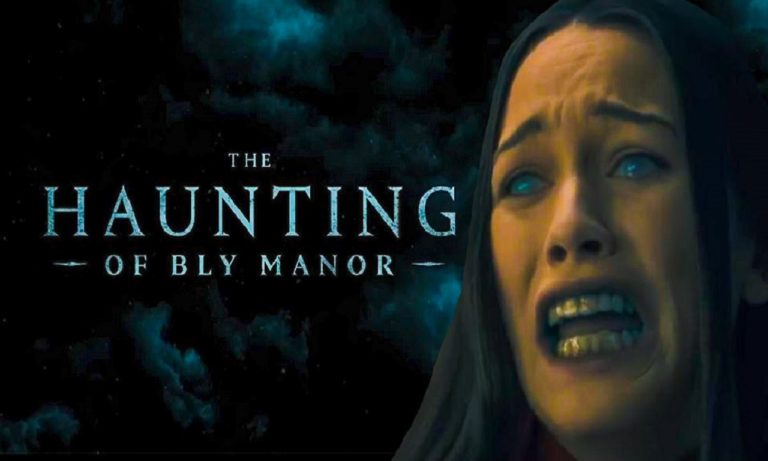Clearly, The Haunting of Bly Manor is a sister tale to The Haunting of the Hill House, but much more ambitious, less terrifying, and with a bit more spirit. The series, an adaptation of The Turn of the Screw, the novella by Henry James, is a comment on the human condition and its tragedy. Unlike its predecessor, the new series on Netflix is sure to leave the audience more sad than terrified.
Bly Manor is a tiny proverbial memory fortress, and the ghosts here are rooted in cerebral horror, as in Hill House. The discomfort generated by the specter of the Hill House is uglier and far more disturbing, but when it comes to the human drama, Bly Manor wins out. On gender and sexuality topics, there are surprising little nods that one would scarcely expect in a horror film, and they are done without being pretentious.
Apparently, people have started to cover all the mirrors in their house and are unable to sleep at night after watching the new series.
Me to every mirror in the house after watching the first episode of The haunting of Bly Manor pic.twitter.com/PLkwle5Hjb
— Chacho (@chacho176) October 12, 2020
With alternating lulls of children speaking in creepily adult languages, and then relaxed, welcoming domesticity, the tale fetches you in. It draws attention to the characters’ inner lives in a way that completely reduces the ghosts to flickering specters in the background. They appear quite infrequently; the show’s emphasis remains on the stories of origin. These, while friendly, do not necessarily contribute in any novel way to the point of the show.
However, there is one whole episode devoted to the manor’s malevolent ghost, set in a different century, which snags the narrative pace. Unlike the rest of the characters and time frames, it detracts from the atmospherics in that it struggles to elicit emotion.
There is, too, a narrative voice that intervenes conveniently, leaving the mind with very little. It’s poetic, but without anyone explaining away all the motivations and material, one wonders if the scenes would not have been sharper and more real. The narrative sounds more like reading than watching, which remains one of the storey’s weakest elements. That is also what makes the accidents very unmysterious.
However, the motif is the hero of The Haunting of Bly Manor. Bly Manor claims our lovers and loved ones do so, though Hill House has proven that it is we who torment us. The pervading ghost is the past that the characters sometimes endlessly inhabit and sometimes visit. It is also a glimpse at the afterlife, with hell represented in traumatic memories that are endlessly relived: an everlasting purgatory.
Me preparing to walk past a mirror after watching two episodes of The Haunting of Bly Manor pic.twitter.com/vFCXYQZLfT
— Sana Panjwani (@sanapanjwan1) October 12, 2020
The characters chat about what haunts them and even deal with it occasionally. There is no way for an outsider to know if Bly Manor is actually inhabited by ghosts, or if just their history blights the characters. As it establishes Bly Manor as a “glue-trap” for mice, the show is also existentialist, with its own “weight” that ties the characters to it. The show performs the notion of living with perfection as a world of limitless return and inescapability.
We are shown the dogged reluctance of a ghost to look down the well in a metaphorical scene, a rendition of the void, wherein lies the tawdry reality of existence: death.
Memories torment and ‘dream-hop’ human beings over time like ghosts. Between who is a ghost and who is a figment of the past, the lines blur. Both degenerate into literal facelessness over time, and still, the haunting continues. Like the memories that give birth to them, each ghost is also different: some restful, some raging, and some others resting a caring hand on the shoulder of a sleeping beloved. The phantasmagoric Bly Manor encapsulates the past as a house in which one lives, and only oblivion offers forgiveness. Perhaps that is why it has been discovered that the name of Bly cannot be found in any real location.
My brain after watching The Haunting of Bly Manor last night:
I know we’re supposed to be sleeping, but… did we covered the mirror? pic.twitter.com/5Qs1yvruqo
— Dani✨ (@chibigon89) October 11, 2020
The love stories are the series’ highest points, tender in a manner that leaves your heart warm and aching. In the narrator’s voice, the show producers admit that a love story is the same as a ghost story; in the final montage, a character is seen leaving a crack open and a light dimly on the door in hopes of catching a glimpse of a lost lover, since “dead does not mean gone.”
In the end, Bly Manor’s The Haunting is just as haunting as our everyday lives are, the phantoms just lovers of the past. If you can, watch this one for its human beings rather than its spirits, and you may find plenty of things worth remembering.

